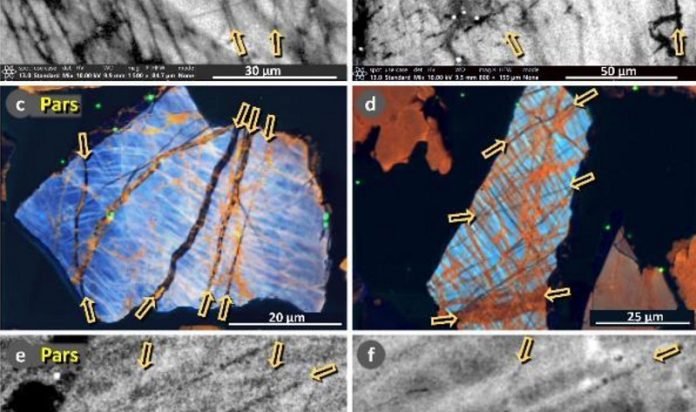
A new study reveals compelling evidence supporting the Younger Dryas Impact hypothesis, which suggests that a fragmented comet collided with Earth’s atmosphere 12,800 years ago.
This event is believed to have caused a sudden climatic shift, leading to a near-glacial period known as the Younger Dryas.
This discovery could help explain the abrupt cooling and massive extinctions that occurred during this time.
Researchers, including UC Santa Barbara emeritus professor James Kennett, have found clues indicating a cosmic airburst across several sites in the eastern United States (New Jersey, Maryland, and South Carolina).
These clues include materials like platinum, microspherules, meltglass, and shock-fractured quartz, which are indicative of the immense force and heat from such an event.
Their findings are published in the journal Airbursts and Cratering.
Unlike massive crater-forming impacts, the pressures and temperatures observed in these findings suggest a different kind of event—an airburst.
In an airburst, a comet or asteroid explodes in the atmosphere rather than hitting the ground, creating intense shockwaves and heat without forming a large crater.
A well-known example of this is the 1908 Tunguska event in Siberia, where an airburst flattened 2,150 square kilometers (830 square miles) of forest.
The comet associated with the Younger Dryas event is estimated to have been about 100 kilometers wide (62 miles) and fragmented into thousands of pieces upon entering the Earth’s atmosphere.
This led to a widespread layer of sediment containing rare materials linked to cosmic impacts, such as iridium and platinum.
These materials, along with magnetic microspherules (cooled metallic droplets) and nanodiamonds, suggest high-pressure and high-temperature conditions.
One of the key pieces of evidence in the study is the presence of shocked quartz. Quartz is a very hard material, and it requires extreme pressure to create the patterns of lines (lamellae) seen in shocked quartz.
Traditional shocked quartz from impact craters has very parallel lines, but the quartz found in these Younger Dryas sediments shows irregular, web-like patterns. These patterns result from lower pressures typical of airbursts rather than direct impacts.
Additionally, the fractures in the quartz contain amorphous silica, or melted glass. This indicates the presence of temperatures greater than 2000 degrees Celsius, which could result from a low-altitude explosion.
Similar quartz grains and meltglass have been found at modern explosion sites, such as the Trinity atomic bomb test site in New Mexico.
These findings contribute to a growing body of evidence suggesting that a fragmented comet caused significant environmental changes 12,800 years ago.
The resulting airburst likely caused widespread fires, abrupt climatic changes, and the extinction of many large animals in North America, including mammoths and giant ground sloths. It also appears to have led to the collapse of the Clovis culture, an early human society.
Kennett and his team believe that their evidence of lower-pressure shocked quartz and other impact materials make a strong case for the Younger Dryas Impact hypothesis.
“These are from very-low-altitude ‘touchdown’ airbursts almost certainly associated with cometary impact,” Kennett said. This research helps to paint a clearer picture of how such cosmic events can dramatically affect Earth’s climate and ecosystems.



